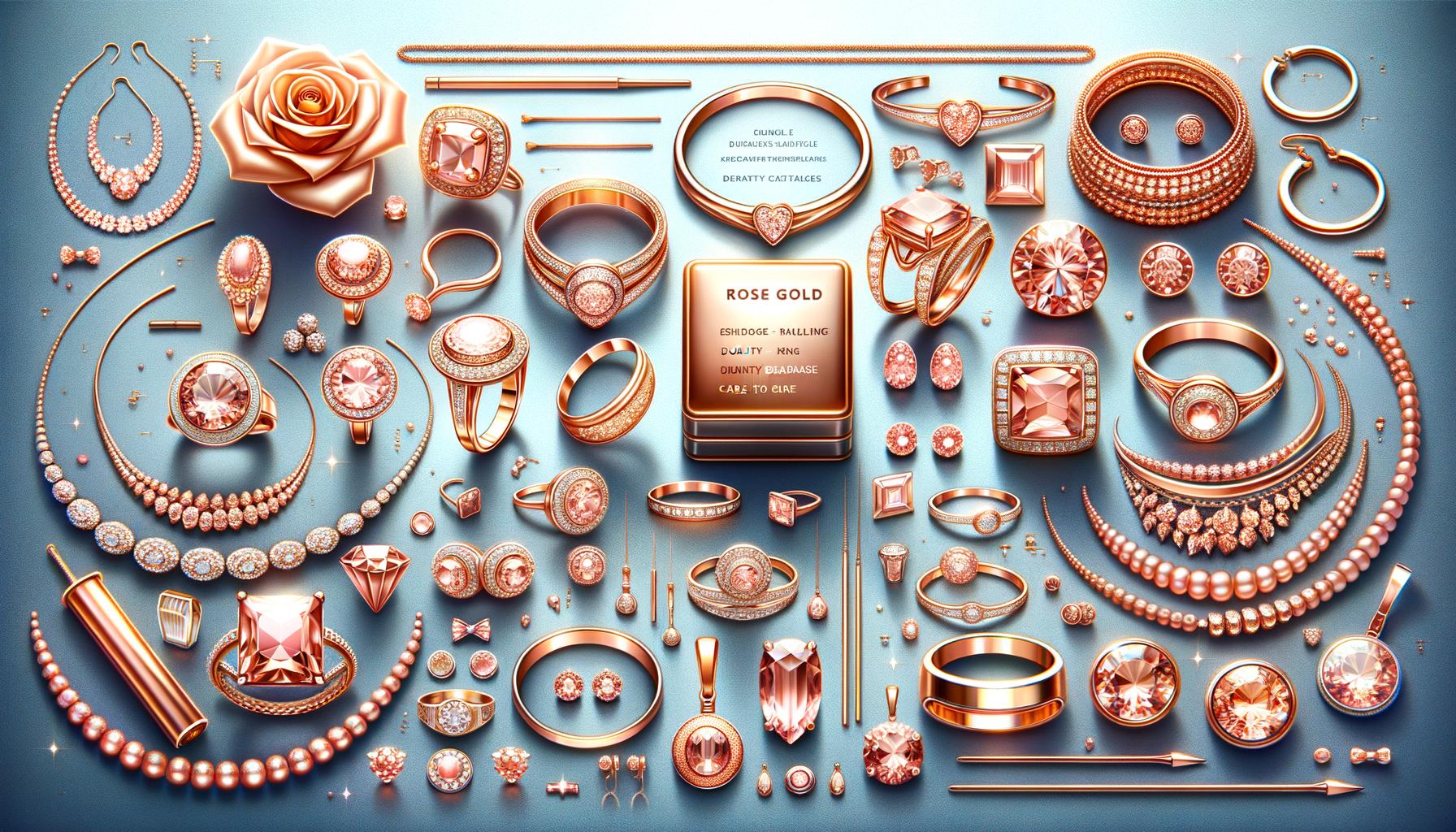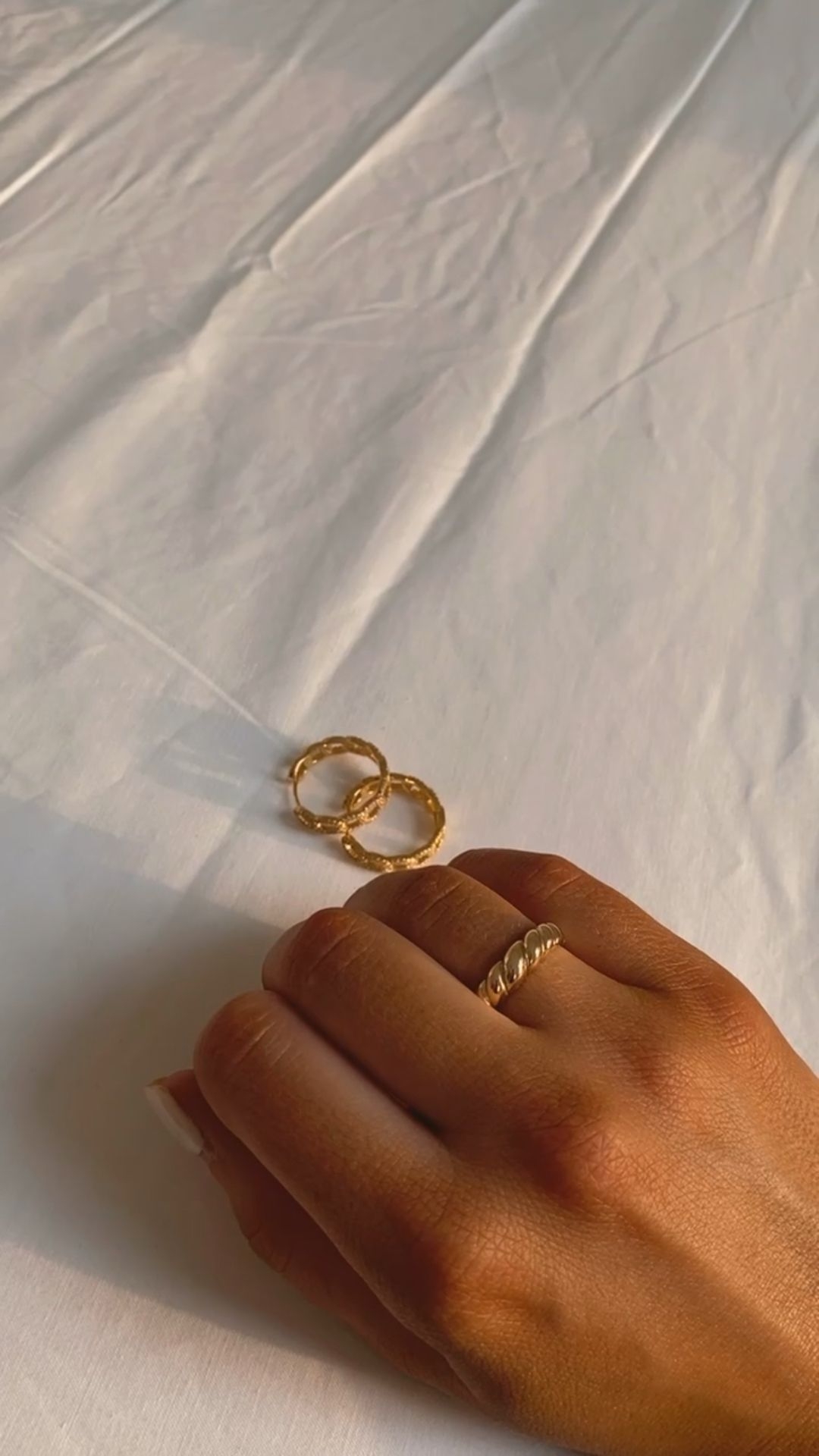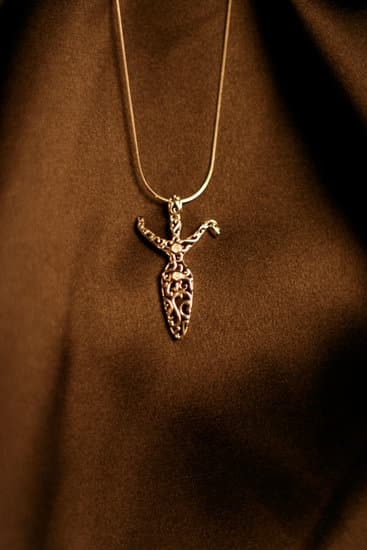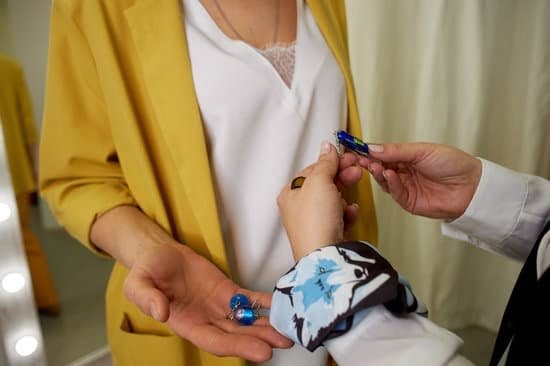Rose gold jewelry has steadily become a beloved choice for those looking to add a touch of elegance and romance to their collections. With its warm, pinkish hue, rose gold offers a unique alternative to the classic yellow or white gold options that have traditionally dominated the jewelry market. In recent years, it has enjoyed growing popularity not just in fashion circles but also among everyday consumers seeking something distinctive and stylish.
One reason behind the blooming trend of rose gold is its versatility. The soft, blush tone of rose gold complements various skin tones and outfits, making it an adaptable addition to any wardrobe.
From engagement rings that symbolize eternal love to everyday accessories that provide a hint of sophistication, rose gold has proved itself as both fashionable and timeless. This article aims to dive deep into everything you need to know about rose gold jewelry, illuminating why this alluring metal has captured so many hearts.
In the following sections, we will explore the rich history and origins of rose gold, examining its evolution over time and pinpointing periods when it was especially popular. We’ll delve into what makes up this captivating alloy and how its shades can vary based on composition.
Additionally, you’ll discover tips for caring for your treasured pieces and advice on selecting high-quality items. Whether you’re new to rose gold or already an enthusiast wanting more insight, this blog post promises valuable information that will deepen your appreciation for this remarkable metal.
The History of Rose Gold
Rose gold, with its distinct blush hue, has a rich and intriguing history that dates back to the early 19th century. The origins of rose gold can be traced to Russia during the reign of Czar Nicholas II.
Known initially as “Russian Gold,” this unique metal became highly favored among the Russian elite due to its romantic and warm color. Renowned jeweler Carl Fabergé was one of the pioneers in using rose gold, enhancing the allure of his famous Fabergé Eggs with its subtle yet opulent tint.
Throughout history, rose gold has experienced peaks and valleys in popularity. During the Victorian era (1837-1901), rose gold gained traction due to Queen Victoria’s fondness for it. Jewelers incorporated rose gold into ornate brooches, earrings, and necklaces adorned with delicate filigree work-a testament to craftsmanship that celebrated both artistry and innovation. The Edwardian period also saw sporadic moments where rose gold jewelry was cherished for its softness and elegance amidst intricate designs that reflected Edwardian fashion sensibilities.
The Art Deco movement (1920s-1930s) marked another vibrant phase for rose gold jewelry. The desire for bold and geometric styles paired perfectly with the warm undertones of this alloy.
Renowned designers such as Cartier embraced rose gold in their world-famous collections, embedding it within striking pieces alongside gemstones like diamonds and onyx. In contemporary times, our affinity for vintage-inspired fashion has contributed significantly to reviving interest in this versatile metal-bringing us full circle in appreciating everything you need to know about rose gold jewelry.
Key periods when rose gold was especially popular include:
- Victorian Era: Ornate designs featuring roses, filigree work, cameos.
- Edwardian Period: Soft aesthetics deeply embedded in rings, pendants.
- Art Deco Movement: Bold statements balancing modernity with timeless allure.
As we continue to explore how history shapes our present-day preferences, understanding these cultural shifts offers insight into why certain metals-such as rose gold-rise beyond mere trend status to become perpetual favorites in the jewelry industry.
What Is Rose Gold?
The Unique Composition of Rose Gold
Rose gold is a precious metal known for its distinctive pinkish hue, setting it apart from traditional yellow and white gold. Its composition is an alloy primarily made up of gold and copper, with the occasional addition of silver.
Typically, rose gold is crafted from 75% pure gold mixed with 25% copper, although the exact ratio can vary slightly depending on the desired color intensity. This blend effectively balances durability with aesthetic appeal, ensuring that rose gold jewelry remains both beautiful and functional over time.
The Alloying Process: A Fusion of Metals
The creation of rose gold involves a precise alloying process where pure gold is combined with copper and sometimes silver under controlled conditions. The percentage of copper used in the alloy influences the final shade of rose gold; higher copper content results in a deeper red tone, while adding more silver can soften the pinkish hue.
This metallurgical technique allows jewelers to produce various shades of rose gold, catering to different preferences and styles. The process not only enriches the coloration but also enhances the metal’s strength compared to pure gold.
Comparing Rose Gold With Yellow and White Gold
When comparing rose gold to yellow and white variants, several differences emerge beyond just color. Traditional yellow gold typically consists of pure gold mixed with elements like zinc or nickel to maintain its golden appearance while enhancing durability.
White gold, on the other hand, incorporates metals such as palladium or nickel to create a silvery sheen and is often plated with rhodium for added brilliance. All three types-yellow, white, and rose-offer unique benefits; however, everything you need to know about rose gold jewelry highlights its warm tones that complement various skin tones and its rising popularity due to fashion trends.
Each type has specific appeal points: yellow for classic looks, white for modern elegance, and rose for romantic sophistication. Understanding these nuances helps consumers make informed choices based on their personal style preferences and occasion-specific needs.
Shades of Rose Gold
Rose gold jewelry comes in a variety of captivating shades, each uniquely influenced by the specific blend of metals used in its composition. The primary factor that affects the hue of rose gold is the amount of copper mixed with pure gold.
More copper results in deeper reddish tones, while less copper and a touch of silver give a lighter, pinkish shade. This flexibility in coloring allows jewelers to create pieces that range from subtle blush to rich and vibrant red, catering to diverse aesthetic preferences.
One popular shade often referred to as “classic” rose gold contains about 25% copper, yielding a balanced pinkish-red color that’s timeless and elegant. This mixture not only enhances the warmth of the gold but also makes it durable enough for everyday wear.
Another admired shade is “pink” rose gold, where a slightly lower copper content creates a softer, more pastel tone. This delicate hue is perfect for those seeking an understated yet sophisticated look, making it particularly favored for romantic pieces like engagement rings and necklaces.
When selecting among the various hues of rose gold, it’s important to consider the skin tone and personal style of the wearer. While deeper shades may complement warmer skin tones beautifully, lighter shades often stand out better on cooler or neutral undertones.
Additionally, mixing different shades within a piece or wearing layered jewelry can create visually appealing contrasts that highlight the unique appeal of each color variation – everything you need to know about rose gold jewelry‘s versatility lies in understanding these subtle differences.
| Shade | Description |
|---|---|
| Classic Rose Gold | Balanced pinkish-red color with approximately 25% copper. |
| Pink Rose Gold | Softer pastel tone with slightly lower copper content. |
The Popularity Surge
Current Trends in Jewelry
In recent years, rose gold has taken the jewelry world by storm, becoming a staple in many collections and beloved by customers of all ages. This trend is partly driven by a shift towards warmer, softer hues that exude a sense of romance and nostalgia.
Modern consumers are increasingly drawn to unique and personalized pieces, and the distinctive pink tint of rose gold meets this demand perfectly. Unlike traditional yellow gold or cool-toned white gold, rose gold provides an unexpected twist on classic designs, making it an appealing choice for contemporary fashion-forward individuals.
Celebrity Influence and Fashion Industry Endorsements
One can’t discuss the surge of popularity in rose gold jewelry without mentioning the significant influence of celebrities and fashion industry giants. A-listers like Blake Lively, Emma Stone, and Beyonce have been spotted flaunting stunning rose gold pieces on red carpets and in their everyday lives.
Such high-profile endorsements naturally pique consumer interest and elevate the desirability of these pieces. Additionally, prominent designers have championed rose gold in their latest collections, integrating it into runway looks and sparking trends that trickle down to mainstream markets.
Versatility of Rose Gold in Various Jewelry Pieces
Another factor contributing to the meteoric rise of rose gold is its remarkable versatility. Whether it’s engagement rings, wedding bands, or everyday accessories like necklaces and earrings, rose gold adds charm and sophistication to any design. Its warm hue complements a variety of skin tones beautifully, often more so than traditional yellow gold.
Moreover, rose gold pairs harmoniously with other metals such as platinum and white gold, allowing for creative combinations that appeal to those who enjoy mixing metals. Everything you need to know about rose gold jewelry includes understanding its adaptability-this metal can easily transition from classy daytime wear to glamorous evening attire with ease.
By addressing these factors-current trends, celebrity influence, and its versatile nature-it becomes clear why there has been such a significant spike in the popularity of rose gold jewelry over recent years.
Types of Rose Gold Jewelry
Rose gold jewelry has taken the fashion world by storm with its soft, romantic glow. One of the key pieces that many people adore are rose gold rings. Among these, engagement rings and wedding bands stand out due to their symbolic value and timeless appeal.
When set with diamonds or other precious gemstones, rose gold engagement rings offer a stunning contrast that enhances the brilliance of the stones. The warm hue of rose gold also adds a modern twist to traditional wedding bands, making them increasingly popular among couples who want something unique yet elegant.
Moving beyond rings, rose gold necklaces and pendants are another beautiful way to incorporate this metal into your personal style. Whether you’re opting for a simple chain or a more elaborate design featuring intricate patterns and gemstones, rose gold can effortlessly elevate your look.
Necklaces crafted from rose gold often serve as versatile pieces that can be layered or worn singularly for a minimalistic yet sophisticated appearance. Custom pendants in rose gold add an extra layer of personalization, making it an excellent choice for gifts that hold special sentimental value.
Earrings and bracelets made from rose gold are equally captivating and versatile. Rose gold earrings range from classic studs to glamorous chandelier designs, suitable for both everyday wear and special occasions. For those who love mixing metals, rose gold pairs wonderfully with both silver and yellow gold earrings, enabling endless styling possibilities.
Bracelets, on the other hand, come in various forms such as bangles, cuffs, and charm bracelets-all radiating that signature rosy gleam. Customized rose gold jewelry pieces like these allow you to create unique combinations that reflect your personal taste.
In summary:
- Rings
- Engagement rings
- Wedding bands
- Necklaces & Pendants
- Simple chains
- Intricate designs
- Earrings & Bracelets
- Studs
- Chandelier earrings
- Bangles
- Cuffs
How to Care for Rose Gold Jewelry
One of the crucial aspects of maintaining your rose gold jewelry is proper cleaning. Consistent care ensures that the metal retains its beautiful hue and luster for years to come. To clean your rose gold pieces, create a gentle cleaning solution by mixing warm water with a few drops of mild dish soap.
Using a soft cloth or brush, gently scrub the jewelry to remove any dirt or residue. Be sure to rinse thoroughly with warm water and pat dry with a lint-free cloth. Avoid abrasive materials, as these can scratch the surface of the metal, diminishing its appeal.
Storing rose gold jewelry properly is just as important as cleaning it. To prevent scratches and tarnishing, store each piece separately in a soft pouch or lined jewelry box. This ensures that your items don’t rub against each other or other pieces made from different metals which might cause discoloration or damage. For added protection, consider wrapping each item in anti-tarnish tissue paper before placing them in storage.
Despite the durable nature of rose gold due to its copper content, it can still be susceptible to tarnishing and minor scratches over time. If you notice tarnish on your jewelry, it’s essential to use specialized polishing cloths designed for gold or visit a professional jeweler for more intensive restoration services.
Regular maintenance checks at your jeweler’s can also help catch any issues early, ensuring that clasps remain secure and gemstones stay firmly in place. Taking these steps will keep everything you need to know about rose gold jewelry looking elegant and luxurious for every occasion.
- Clean with warm water and mild dish soap
- Use a soft brush or cloth
- Store separately in pouches or lined boxes
- Wrap in anti-tarnish tissue paper for extra protection
- Regularly check gemstones and clasps at your jeweler’s
How to Choose High-Quality Rose Gold Jewelry
When seeking high-quality rose gold jewelry, one must consider several factors to ensure you make a valuable and informed purchase. Firstly, understanding the karat value is essential. Rose gold can range from 10K to 22K, with higher karat values containing more pure gold.
However, a higher gold content also means the metal is softer and may be less durable. Therefore, 14K and 18K are popular choices as they offer a balance between durability and rich color. Understanding everything you need to know about rose gold jewelry helps in making an educated decision that encompasses both aesthetic appeal and longevity.
Pay Attention to Craftsmanship
The craftsmanship of rose gold jewelry plays a significant role in its overall quality and durability. Skilled artisans ensure that each piece is well-crafted with attention to detail and precision.
Finely crafted rose gold should display a smooth finish with no visible marks or flaws, ensuring it not only looks beautiful but also stands the test of time. Evaluating the quality of gemstones set within the jewelry is equally important; check for secure settings and harmonious placement that enhances the piece’s elegance.
Trusted Brands and Designers
Investing in pieces from reputable brands or renowned designers can offer peace of mind when purchasing rose gold jewelry. Established jewelers usually adhere to high standards of quality control and ethical practices. Brands like Tiffany & Co. Cartier, or smaller boutique designers known for their specialized craftsmanship often provide certifications that guarantee authenticity and quality. Researching reviews and seeking recommendations can also guide you toward trusted sources that specialize in refined rose gold creations.
Importance of Authenticity Certificates
Ensuring your rose gold jewelry comes with authenticity certificates is crucial for verifying its composition and genuine nature. These documents typically include details about the karat weight, stones used, crafting techniques, and may even highlight ethical sourcing practices followed by the jeweler. Certificates serve not just as proof of your investment’s value but also aid future appraisals or resales if necessary.
By adhering to these guidelines on how to choose high-quality rose gold jewelry, you’ll acquire items that blend beauty with lasting integrity-a perfect addition to any collection.
Mixing and Matching Rose Gold Jewelry
When it comes to mixing and matching rose gold jewelry, the possibilities are endless. Rose gold’s unique pinkish hue makes it incredibly versatile, allowing it to complement a wide range of fashion styles and other metallic tones. For instance, pairing rose gold pieces with white or yellow gold can create a stunning, cohesive look.
Many people shy away from mixing metals, but having a balanced combination can enhance your overall style rather than overwhelm it. This approach works well for both casual daytime outfits and more elegant evening wear.
Additionally, rose gold jewelry can be beautifully paired with a variety of gemstones. Diamonds are an obvious choice due to their classic shine that perfectly offsets the warm tones of rose gold. However, don’t overlook colored gemstones like morganite, which has a peachy-pink color that complements rose gold exquisitely. Turquoise and emeralds can also create eye-catching contrasts, adding vibrancy to your accessories. Mixing different stones within multiple jewelry pieces provides a dynamic yet harmonious look.
Considering the changing seasons and varying events is another important aspect when mixing and matching rose gold jewelry. For spring and summer occasions, lighter and daintier pieces tend to reflect the airy feel of these seasons better-think delicate necklaces layered with subtle bracelets.
Conversely, during fall and winter months or for more formal events, opt for bold statement pieces like chunky rings or intricately designed cuffs in rose gold to stand out against darker attire. This seasonal versatility demonstrates that there’s truly everything you need to know about rose gold jewelry’s adaptability.
| Jewelry Piece | Styling Suggestion |
|---|---|
| Necklaces | Layer with white or yellow gold chains |
| Earrings | Pair with colored gemstones like turquoise or emeralds |
| Bracelets | Mix delicate designs for spring/summer; bold cuffs for fall/winter |
The Ethical Consideration in Buying Rose Gold Jewelry
When purchasing rose gold jewelry, it’s essential to consider both the aesthetic and ethical aspects of your selection. Ethical sourcing stands at the forefront of responsible consumerism today, driving many buyers to seek information on where their jewelry comes from and how it impacts global communities and ecosystems.
A critical facet of ethical considerations lies in understanding the origin of materials used. Gold mining has historically been linked to environmental degradation and poor labor conditions. Ensuring that your rose gold jewelry is crafted using responsibly mined or recycled gold can significantly mitigate these adverse effects. Many jewelers now offer pieces certified by organizations like Fairmined or Fairtrade, which guarantee that the gold has been sourced with minimal environmental impact and under fair labor practices.
Another vital element is verifying that gemstones incorporated into rose gold designs are ethically sourced. The Kimberley Process aims to restrict the flow of conflict diamonds, yet it doesn’t cover all ethical concerns associated with gemstone mining. Consumers should look for jewelers who use transparent supply chains, ensuring that all materials are extracted through humane and eco-friendly methods.
| Key Consideration | Explanation |
|---|---|
| Gold Sourcing | Opt for responsibly mined or recycled gold certified by credible organizations like Fairmined. |
| Gemstone Transparency | Ensure gemstones comply with humane extraction practices beyond just conflict-free certification. |
Finally, supporting brands committed to sustainable practices can further ensure you’re making an ethical purchase. These brands often provide detailed disclosures about their sourcing processes, including environmental initiatives and worker welfare programs. By choosing wisely, you contribute not only to your personal style but also promote better industry standards globally.
Understanding everything you need to know about rose gold jewelry includes being aware of its ethical dimensions-making informed choices guarantees a lasting positive impact beyond mere aesthetics.
Conclusion
In conclusion, rose gold jewelry offers a unique blend of timeless elegance and contemporary appeal, making it an incredibly versatile choice for various styles and occasions. From its fascinating history dating back to the early 19th century to its resurgence in popularity today, rose gold has cemented itself as a favored option among jewelry enthusiasts. Understanding the alloy’s composition and the different shades available allows for greater appreciation of this beautiful metal’s nuances.
With everything you need to know about rose gold jewelry now at your fingertips, it’s easier than ever to make informed decisions when purchasing these stunning pieces. Whether you’re drawn to engagement rings, necklaces, earrings, or custom creations, paying attention to key factors like karat weight, craftsmanship, and ethical considerations ensures you invest in high-quality items that you’ll cherish for years to come.
The care tips we’ve discussed will also help maintain your jewelry’s luster and longevity.
Finally, we encourage you to explore the many ways you can style rose gold jewelry. Mixing and matching with other metals or gemstones can create striking looks perfect for any season or event. We invite our readers to share their personal experiences with rose gold jewelry in the comments section below.
Your insights could provide valuable inspiration for others. Don’t hesitate to ask questions or offer feedback; engaging with fellow enthusiasts can enrich your journey through the world of rose gold jewelry.
Frequently Asked Questions
What’s Special About Rose Gold?
Rose gold is unique due to its warm, pinkish hue, which is achieved by blending gold with copper alloys. This distinctive color sets it apart from traditional yellow and white gold, making it an elegant and romantic choice for jewelry.
Additionally, rose gold’s subtle blush tone complements various skin tones beautifully, adding a versatile yet luxurious aesthetic appeal to any piece of jewelry.
Can You Wear Rose Gold Every Day?
Rose gold can indeed be worn every day, as it possesses a resilience similar to other types of gold. Its durability comes from the addition of copper, which not only adds to its unique color but also enhances its strength.
Unlike pure gold (24k), which is soft and prone to scratching and bending, the alloyed nature of rose gold makes it sturdy enough for daily use without significant wear or damage.
Is Rose Gold Hard to Maintain?
Maintaining rose gold is relatively straightforward compared to other metals like silver that tarnish easily. However, it does require occasional care to maintain its luster because the copper content can develop a patina over time due to exposure to air and moisture.
Cleaning rose gold gently with mild soap and water or a professional jewelry cleaner can help keep it looking vibrant and shiny. Regularly removing any buildup of dirt or oils will ensure that your rose gold retains its distinctive beauty over many years of wear.

Welcome to my jewelry blog! My name is Sarah and I am the owner of this blog.
I love making jewelry and sharing my creations with others.
So whether you’re someone who loves wearing jewelry yourself or simply enjoys learning about it, be sure to check out my blog for insightful posts on everything related to this exciting topic!





